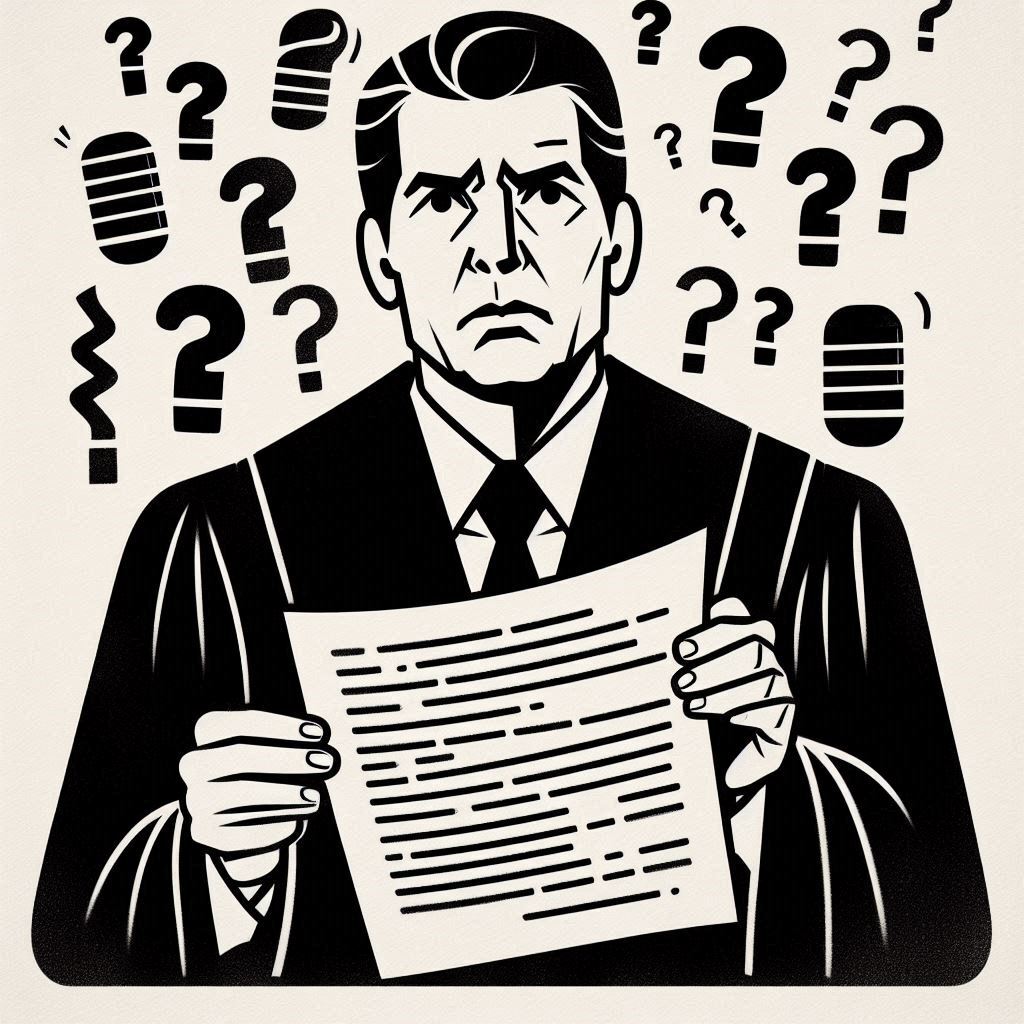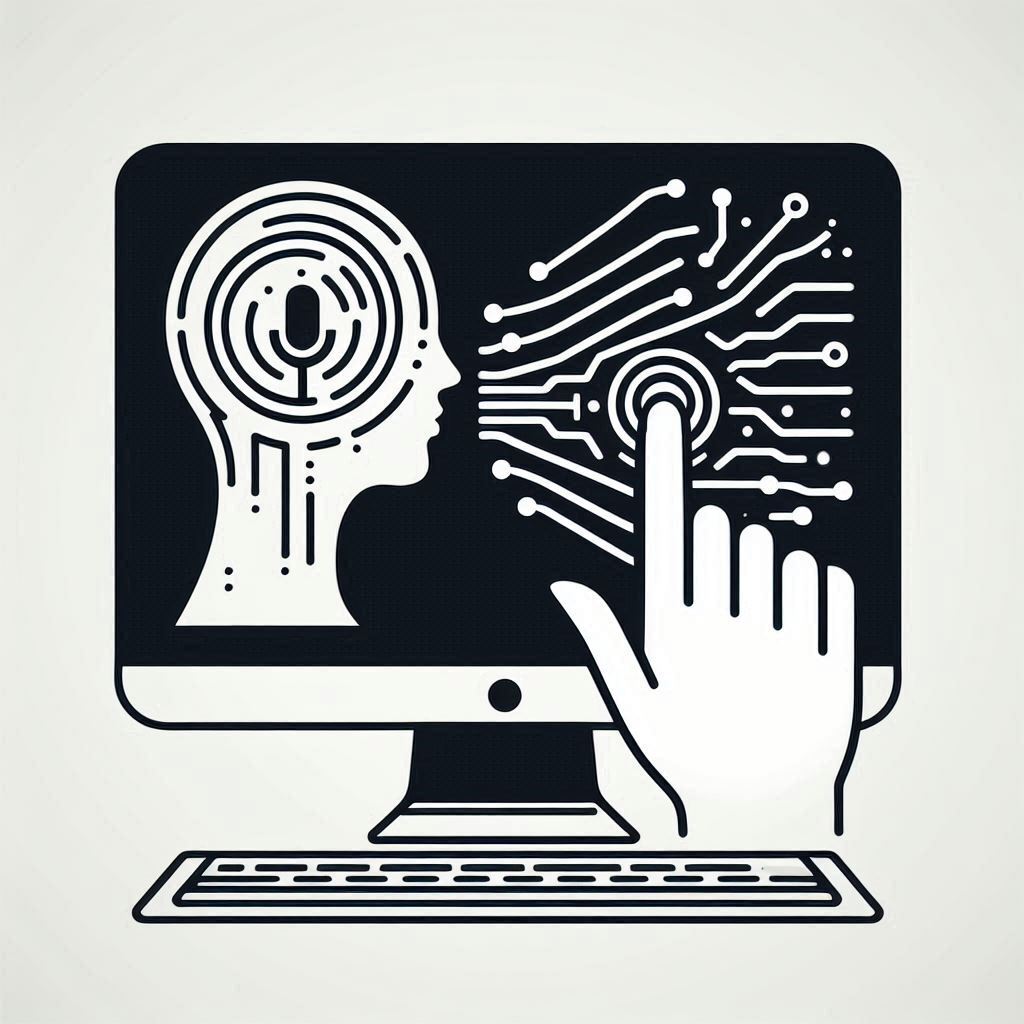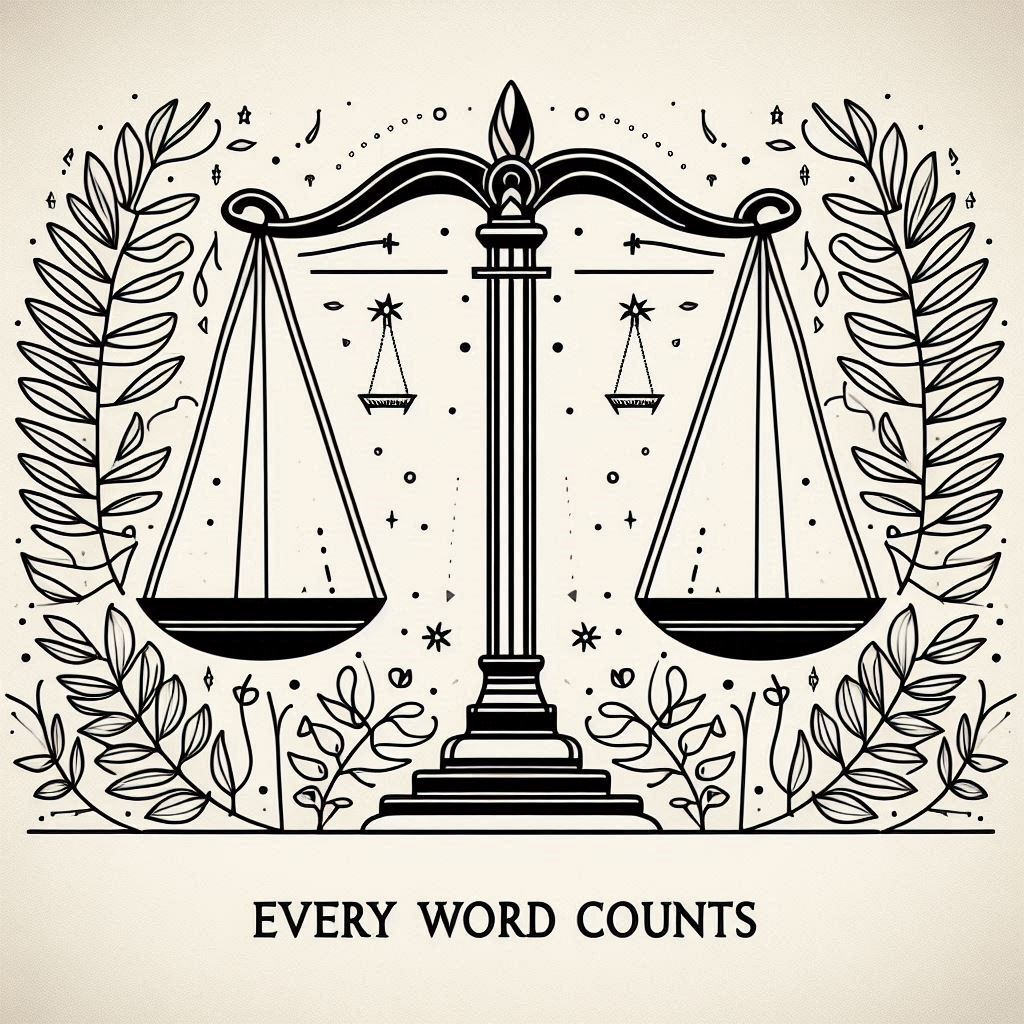In the realm of legal proceedings, every word counts – especially when it’s part of an official record.
In the critical domain of legal proceedings, transcription accuracy in legal documentation is paramount as every spoken word holds significant weight within official records. Imagine a scenario where a single, misinterpreted word alters the outcome of a case. This isn’t fiction; it’s a real concern for those who rely on legal transcripts daily. Attorneys, judges, and paralegals depend on these documents to prepare arguments, appeal decisions, or maintain thorough records. Inaccuracies in transcription can lead to costly delays, appeals, and even miscarriages of justice.
Court reporters and legal transcriptionists know this pressure intimately. Their skills are put to the test every day as they strive for perfection. Continuous learning is a must in their field. From mastering specialized software to honing exceptional listening abilities, each step towards proficiency ensures that court transcripts uphold the integrity of judicial proceedings.
For law students beginning their careers and new attorneys looking to make an impact, understanding the nuances of transcription is beneficial for professional development. Accurate legal documentation serves as a blueprint for constructing compelling cases. It’s not just about winning; it’s about ensuring justice is served with fairness and precision.
Individuals caught in the midst of litigation have much at stake. The reliability of court records can significantly influence case outcomes. By advocating for accuracy in transcription, they contribute to a system that values truth and justice equally. Transcription in court thus becomes not just an administrative task but a cornerstone of personal and legal integrity.
Academics and researchers are also keen observers of this process. Their studies into the efficiency and fairness of legal systems often highlight the critical role of transcription technology. The emerging progress provides insight into how accuracy can be further improved to tighten up court procedures while maintaining high quality standards.
In essence, “Transcription Accuracy Matters” is more than a title; it’s a rallying cry for all involved in legal documentation. It reminds us that each word transcribed is a step towards justice – a journey we must all take together with diligence and care.
Introduction to the Importance of Legal Transcription

In the legal realm, accuracy isn’t just an aspiration; it’s a necessity. Legal transcription, particularly Transcription in court settings, stands as a critical component of judicial proceedings. The precision with which spoken words are converted into written records can make or break cases, impacting lives and upholding the integrity of our justice system.
Court transcripts serve as the official record, documenting every statement made during trials and hearings. They’re indispensable for attorneys crafting strategies, judges deliberating on decisions, and paralegals organizing case files. A misplaced comma or a misheard phrase can alter interpretations dramatically, potentially leading to erroneous rulings or costly appeals.
Consider this scenario: An attorney meticulously prepares their argument based on a court transcript. Unbeknownst to them, a transcription error has flipped the meaning of a key witness’s testimony. The implications are profound – mistakenly relying on inaccurate information could jeopardize the case outcome. This stark reality underscores the critical importance of meticulous Transcription in court.
For law students eager to grasp legal nuances and new lawyers honing their skills, accurate documentation offers invaluable insights into courtroom dynamics. Each word becomes a piece of the puzzle, guiding them through the complexities of litigation and appeals. It’s a masterclass on how small details can significantly sway judicial interpretations.
Moreover, Transcription in court is pivotal for those directly involved in ongoing litigation. Accurate records ensure that every party’s position is represented correctly, fostering fairness and trust within legal proceedings. Advocating for transcription accuracy becomes an act of self-preservation, safeguarding one’s interests against the unpredictability of human error.
In academic circles, researchers and scholars analyze court transcripts to decode trends, assess judicial performance, and understand systemic issues. Transcription errors can skew data, tainting research outcomes that inform policies or legal reforms. Precision in transcription is thus not just a procedural requirement but a foundational element upon which reliable analysis rests.
The essence of legal transcription lies at the heart of justice administration. It’s a testament to the fact that every word matters – especially when it comes to preserving truth and ensuring equitable resolutions within our courts.
The Consequences of Inaccurate Transcription in Court

The implications of inaccurate Transcription in court are stark and far-reaching. Imagine a scenario where a single misheard word changes the course of justice. It’s not merely theoretical; it happens more often than one might think. Consider cases overturned due to transcription errors that altered witness statements or misquoted legal arguments – errors so profound they led to wrongful convictions.
In a wrongful death lawsuit, a transcription error in medical records led to a fatal medication dose. This error resulted in a $140 million verdict for the family of the deceased. The case underscores the severe consequences that transcription mistakes can have, particularly in medical contexts where precise documentation is critical.
Wrongful convictions are perhaps the most severe consequence of inaccurate Transcription in court. They represent a failure of our judicial system, where the wrong person is imprisoned due to mistakes that could have been prevented. The ripple effects extend beyond the individual, affecting families, communities, and public trust in legal institutions.
Lengthy appeals processes triggered by transcription errors further strain resources and prolong uncertainty for all parties involved. Every additional hearing requires time, effort, and financial commitment from attorneys, judges, and court staff. For defendants and plaintiffs alike, this means extended periods of anxiety and the potential for life-altering decisions to hang in limbo.
Moreover, there’s a significant economic impact. Inaccuracies necessitate repeated work and additional legal battles, resulting in unnecessary costs that could have been avoided with meticulous transcription practices. The financial burden is shared by individuals, law firms, and taxpayers, as public funds are diverted from other critical areas to rectify preventable mistakes.
For court reporters and legal professionals, these examples serve as stark reminders of the importance of their roles. Each word recorded must be treated with utmost care, for it could sway the balance in complex legal proceedings.
Ultimately, the consequences of inaccurate transcription underscore the need for continuous improvement and rigorous quality control measures. It’s a call to action for all stakeholders within the legal system: ensuring that every word captured during trials and hearings is correct, because justice depends on it.
Understanding the Legal Transcript Process

Creating transcripts is an intricate process that begins within the walls of a courtroom, where every spoken word holds significance. At the heart of this operation are legal transcriptionists and court reporters – skilled professionals dedicated to capturing dialogue with precision. Their role in Transcription in court is paramount, ensuring that all proceedings are meticulously recorded for future reference.
The initial step involves capturing audio or video feeds from trials and hearings. This task often falls on stenographers or digital recording systems, both of which have their merits depending on the jurisdiction and case requirements. Stenographers use specialized keyboards to input phonetic codes representing words and phrases at incredible speeds, while digital recorders provide clear audio files that can be transcribed post-event.
Once recordings are made, they are sent for transcription by qualified professionals. This process requires an acute understanding of legal terminology and the ability to discern speakers in often complex court environments. Transcriptionists must possess exceptional hearing skills and a keen eye for detail to accurately interpret each word, ensuring that no nuance is overlooked.
Qualifications for those involved in Transcription in court are stringent, reflecting the critical nature of their work. Many states require certification or licensing for court reporters, guaranteeing they meet specific educational standards and pass rigorous exams. Continuous professional development is also crucial, keeping transcriptionists updated on legal jargon, courtroom protocol, and technological advancements.
In-depth knowledge of legal documentation is another essential skill. Transcription in court isn’t just about converting speech to text; it’s about understanding the context within which words are spoken. Law students and new lawyers can gain valuable insights by studying how legal transcripts are crafted, learning the importance of precise language in judicial settings.
For individuals involved in ongoing litigation or researchers interested in legal processes, knowing how Transcription in court works offers a behind-the-scenes glimpse into the judicial system’s mechanics. It highlights the role technology plays in enhancing accuracy while emphasizing the irreplaceable human element needed for interpretation and judgment.
In conclusion, mastering the art of Transcription in court is a complex endeavor that merges technical proficiency with an intimate understanding of legal proceedings. Whether you’re a seasoned attorney preparing your case or a curious observer keen on transparency within the justice system, recognizing the importance and intricacies of this process can greatly impact how you perceive judicial outcomes.
The Role of Technology in Enhancing Transcription Accuracy

In the field of legal documentation, technology has proven to be a transformative force, particularly in terms of transcription accuracy. Advanced tools like speech recognition software and AI-driven platforms have revolutionized how we handle Transcription in court, ensuring that every word is captured with unprecedented precision.
Speech recognition systems have become increasingly sophisticated, capable of understanding diverse accents and speech patterns. This capability significantly reduces human error during initial recordings, providing a solid foundation for subsequent transcriptions. Moreover, these tools can swiftly process large volumes of audio data, making them invaluable assets in fast-paced legal environments where time is often against us.
AI algorithms also play a pivotal role by enhancing the quality of court transcripts. They assist in filtering out background noise and clarifying indiscernible speech segments, ensuring that even the most subtle nuances are not lost in translation. Furthermore, AI can predict common phrases or terminologies based on historical data, expediting the transcription process while maintaining accuracy.
However, it’s crucial to acknowledge that technology is merely a tool, and its effectiveness hinges upon human expertise. Despite advancements, there remains no substitute for the discerning ear of an experienced legal transcriptionist. The nuances of courtroom dialogue – the inflections, the pauses, the interjections – can easily be misinterpreted by machines lacking context.
Human oversight ensures that these subtleties are correctly identified and transcribed, preserving the integrity of court records. This blend of technology with human judgment represents the future of Transcription in court – a synergy where automation aids efficiency while professional scrutiny guarantees accuracy.
For legal professionals navigating complex cases or students aiming to master courtroom dynamics, understanding this fusion of tech and touch is pivotal. It underscores the evolving landscape of legal documentation and highlights the continued relevance of skilled transcriptionists. As technology continues to advance, it will undoubtedly play a more significant role in enhancing the efficiency and reliability of Transcription in court, but for now, we stand at an exciting crossroads where man meets machine in service of justice.
Best Practices for Legal Transcriptionists

In the critical field of legal transcription, accuracy is paramount. For those tasked with transcribing court proceedings, adhering to best practices can mean the difference between a transcript that merely passes and one that excels under scrutiny. Here are essential tips every professional should master.
Firstly, listening skills are foundational. Legal professionals often speak quickly, using technical jargon or referencing complex cases in rapid-fire succession during Transcription in court. To capture these nuances accurately, it’s crucial to train your ears to discern the subtlest of differences. Practice active listening by replaying segments until every word is crystal clear.
Knowledge of legal terminology is non-negotiable. Courtrooms are filled with specialized language that can be alien to those unfamiliar with legal processes. Regularly update your vocabulary to include terms related to various areas of law. This ensures you’re equipped to transcribe any case accurately, from criminal justice hearings to corporate law disputes.
Editing techniques should be honed like a craft. Even the most experienced transcriptionists benefit from reviewing their work meticulously. Utilize tools for spell checking and grammar verification but remember that these aids are not infallible. Develop an eye for spotting errors in context; sometimes, what sounds right might still be wrong within legal discourse.
Consistency in formatting is key to maintaining clarity in Transcription in court. Establish a system for noting speakers, interruptions, or overlaps. Use timestamps or speaker identifiers clearly so that the transcript’s structure aligns seamlessly with how events unfolded in real time.
Finally, confidentiality and ethical conduct underpin all aspects of legal transcription. Protecting sensitive information is not just a professional guideline but a legal requirement. Ensure your work environment is secure, and handle transcripts responsibly from creation to storage.
By integrating these best practices into your daily routine as a legal transcriptionist, you position yourself at the forefront of your field. Your contributions become integral in shaping the legal narrative, supporting attorneys, judges, paralegals, law students, and individuals navigating complex litigation landscapes with confidence. Remember, Transcription in court isn’t just about words on paper – it’s the backbone that supports justice being served fairly and accurately for all involved parties.
The Future of Legal Transcription

Gazing into the future of legal transcription paints an exciting picture for all stakeholders – attorneys, judges, paralegals, aspiring professionals, litigants, and academics. Innovations on the horizon promise to refine accuracy further while revolutionizing the field’s landscape.
AI will make great strides in transcription in court. Imagine software that can not only transcribe but also identify speakers based on voice patterns, enhancing the clarity of dialogue for complex cases involving multiple parties. This technology could correct common errors autonomously and suggest amendments where context indicates a likely misinterpretation – a virtual assistant dedicated to maintaining impeccable records.
Specialized training programs will emerge, tailored specifically to equip legal transcriptionists with unparalleled skills. These courses may incorporate immersive simulations that mirror courtroom dynamics or offer insights into emerging legal terminologies. By staying ahead of legislative changes and technological advancements, these educational initiatives ensure professionals are always up-to-date, meeting the evolving demands placed upon them.
Remote transcription services will likely become more prevalent as the world adapts to digital transformations. High-speed internet and robust cybersecurity measures will enable professionals to work from anywhere while maintaining top-tier accuracy standards. This flexibility could lead to a more diverse workforce, bringing fresh perspectives into legal documentation practices and potentially reducing costs associated with traditional office setups.
In an era where data is king, advanced analytics applied to Transcription in court could unlock patterns within judicial decisions or highlight trends across different jurisdictions. Researchers might access anonymized transcripts to study language use over time or analyze how certain phrases influence case outcomes. Such insights could inform future legal strategies and contribute significantly to the body of knowledge on effective courtroom communication.
As technology evolves, so does its potential impact on justice systems worldwide. From AI-driven innovations that improve transcription accuracy to training programs that equip professionals with cutting-edge skills, the future promises a more efficient, accurate, and transparent landscape for all involved in Transcription in court proceedings.
Conclusion – Why Every Word Counts in Legal Transcription

Reflecting on our journey through the intricacies of legal transcription, it becomes abundantly clear: every word counts. In the realm of justice, Transcription in court is not merely a bureaucratic formality but a cornerstone for truth and fairness.
Imagine an attorney reviewing a critical piece of evidence – a transcript that could make or break their case. The accuracy of this document can determine the outcome, influencing lives profoundly. It’s here we see why every syllable matters; it’s about more than just words on paper – it’s justice being served correctly.
For judges tasked with making informed decisions based on presented facts, reliable transcripts are indispensable. They ensure that rulings rest upon a solid foundation of accurate information. Similarly, paralegals rely heavily on these documents to prepare cases meticulously, leaving no stone unturned in their pursuit of the best possible outcome for clients.
Beyond legal professionals, individuals navigating the complexities of litigation find solace in knowing that court records are meticulously maintained. Accuracy provides them with confidence that every argument and rebuttal will be considered without distortion or omission – a silent ally advocating for justice within the system itself.
Court reporters and transcriptionists play a pivotal role as custodians of this integrity. Their commitment to excellence, coupled with emerging technologies designed to enhance accuracy, is paramount. It underscores the critical importance of their craft in upholding judicial standards worldwide.
To law students and aspiring attorneys, understanding the significance of precise legal documentation becomes an essential lesson early on. It teaches them that within each transcript lies not only the facts but also the potential impact on individuals’ lives – a lesson in empathy, responsibility, and the pursuit of justice through meticulous attention to detail.
Researchers and academics find a treasure trove in these meticulously recorded proceedings. They can explore patterns, analyze the evolution of legal language over time, or uncover insights that may impact future legislation – all made possible by the unwavering accuracy of transcripts.
In conclusion, Transcription in court is much more than a series of words typed out; it’s the silent guardian ensuring justice’s path remains unobstructed. Its importance cannot be overstated – it’s about safeguarding truth, upholding standards, and empowering every participant within our legal systems to make informed decisions grounded in reality. As we move forward into an era where technology enhances reliability further, let us remember: accuracy is the bedrock upon which justice is built – one word at a time.
